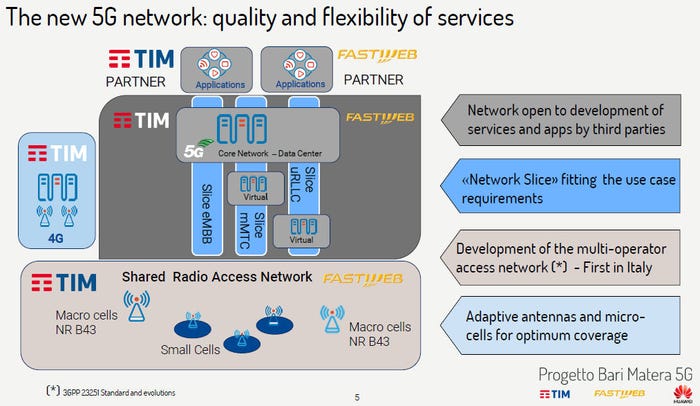The BariMatera5G project seeks to exemplify the potential of 5GThe BariMatera5G project seeks to exemplify the potential of 5G
A collaboration between TIM, Huawei and Fastweb to create one of the first 5G antennas is designed to show why it’s worth the effort.
March 5, 2018

A collaboration between TIM, Huawei and Fastweb to create one of the first 5G antennas is designed to show why it’s worth the effort.
The BariMatera5G project is a high-profile piece of 5G virtue-signaling by these three tech players. It has left the lab and officially hit the airwaves today with some kind of symbolic switch having been flicked, no doubt. As a result the Italian cities of Bari and Matera will be among the first in Europe to live the 5G dream, or at least be ready for it once devices turn up.
The precise aim of the project is to use the 3.7-3.8 GHz band to achieve 75% coverage of the two cities’ testing area by 2018. The testing has already hit 3 Gbps in the field, we’re told, but it’s about a lot more than just enhanced mobile broadband, which is just as well as merely a step up in speeds-and-feeds is unlikely to be enough to make 5G a success.
The slide below from the latest presentation about the project is a good summary of the various moving parts that full-fat 5G will consist of. The afore-mentioned tests also achieved 2 ms latency, which corresponds with the low-latency network slice (uRLLC) and the third cardinal slice is massive machine-type communication (mMTC), which is geek-talk for IoT and will be represented at a technological level primarily by NB-IoT.
This project seems to have established itself sufficiently that is reasonable to expect it to be an exemplar for early 5G and what it promises for a while yet. It’s also good to see at least some parts of Europe having a good go at keeping up with China and the US in the 5G race.

About the Author
You May Also Like










.png?width=300&auto=webp&quality=80&disable=upscale)


_1.jpg?width=300&auto=webp&quality=80&disable=upscale)